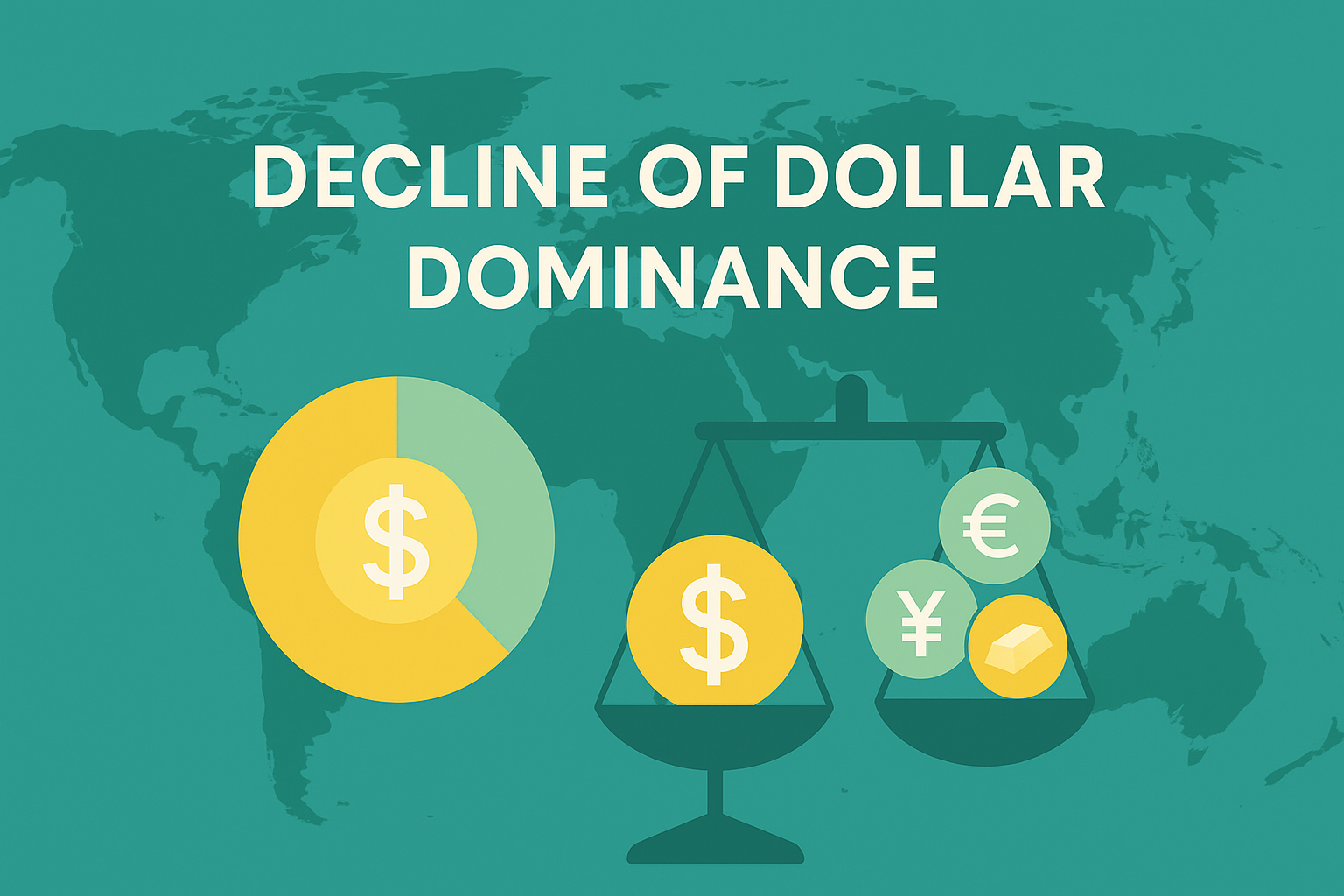– Causes, Regional Shifts, and the Future of Global Currency Power –
Overview: What Is “De-dollarization”?
De-dollarization refers to a growing trend among sovereign states—especially those facing geopolitical pressure—to reduce their dependence on the U.S. dollar in trade, reserves, and financial infrastructure.
Amid heightened Middle East tensions in 2025, this process is accelerating, with geopolitical, strategic, and economic motives intertwining.
Immediate Trigger: Middle East Conflict and U.S. Sanctions
🔺 U.S.–Iran–Israel Tensions
- Israel–Iran escalation and threats over the Strait of Hormuz are intensifying.
- The U.S. has responded with sanctions on Iranian oil and its allied militias, prompting backlash across the region.
🔻 Regional Reaction
- Iran, Iraq, and Syria are pushing oil settlements in non-USD currencies (e.g., Chinese yuan, Russian ruble, UAE dirham).
- Saudi Arabia and the UAE, traditionally U.S.-aligned, are increasing financial cooperation with China and BRICS+.
“The dollar is now seen not only as a currency but as a strategic weapon,” says an Emirati official.
Structural Drivers of Dollar Decline
| Driver | Explanation |
|---|---|
| 📉 Weaponization of the dollar | U.S. sanctions using SWIFT exclusion, asset freezes, and reserve seizures (Russia, Iran, Afghanistan) have reduced global trust. |
| 🇨🇳 China’s alternative ecosystem | China’s Cross-Border Interbank Payment System (CIPS) and yuan-denominated energy contracts (petroyuan) are gaining traction. |
| 🌍 Rise of multipolarity | BRICS+ (Brazil, Russia, India, China, South Africa, and applicants like Iran, UAE, Saudi Arabia) advocate for a non-dollar reserve system. |
| 💱 Central bank diversification | Countries are diversifying FX reserves away from USD toward gold, CNY, and EUR. |
🕌 Middle East Focus: Gulf States at the Crossroads
🇸🇦 Saudi Arabia
- Exploring yuan-based oil contracts with China.
- Joined Shanghai Cooperation Organization (SCO) and BRICS+ in observer or applicant status.
🇦🇪 UAE
- Facilitates gold-for-oil barter trades.
- Plays intermediary between dollar-based and non-dollar-based systems.
🇶🇦 Qatar
- Maintains strong USD ties via LNG contracts but diversifies with RMB agreements.
➡️ The Gulf is no longer a monolith of dollar loyalty.
📊 Data Snapshot
| Metric | 2010 | 2020 | 2024 | Trend |
|---|---|---|---|---|
| Global reserves in USD (%) | 62% | 59% | 58% | 📉 slow decline |
| Global trade in USD (%) | 88% | 84% | ~80% | 📉 decreasing |
| Central bank gold reserves | ~30,000t | ~34,000t | 36,700t | 📈 increasing |
📈 Likely Scenarios (2025–2030)
| Scenario | Description | Implication |
|---|---|---|
| 🟩 Gradual Multipolarization | Dollar remains dominant but with stronger competition from RMB and gold. | Fragmented global payments system. |
| 🟨 Regional Blocization | Middle East, BRICS+, and ASEAN form semi-closed currency/payment ecosystems. | Reduces dollar hegemony in oil trade. |
| 🟥 Shock Decoupling | Triggered by war, cyberattack, or U.S. debt crisis. Sudden shift away from USD. | Market chaos, capital flight to gold/CNY. |
🔮 Long-Term Outlook: The Dollar Will Erode, Not Collapse
- The U.S. dollar will likely remain the dominant reserve currency, but:
- Its share will fall to 50–55% over the next decade.
- Gold and RMB will gain share in sovereign reserves.
- Digital currencies (e.g., e-CNY, BRICS token proposals) may bypass the SWIFT network.
The dollar’s supremacy is not ending—it is being contested.
✅ Conclusion
The Middle East’s reaction to growing U.S.-centric risk—especially amid conflict and sanctions—is a key driver of de-dollarization.
While the dollar will not disappear, its unchallenged global dominance is eroding, giving rise to a more fragmented, politically sensitive global monetary system.


